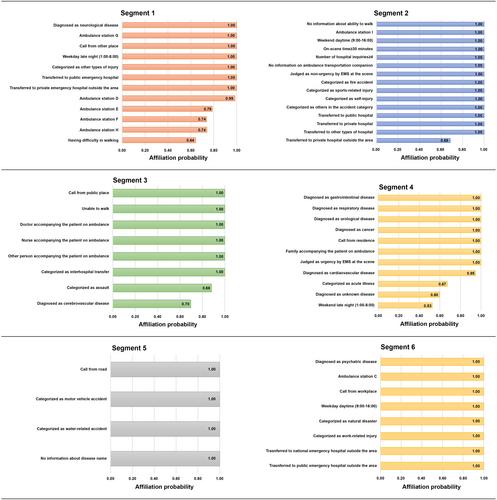Identifying subgroup characteristics of adult ambulance users with nonurgent medical conditions in Japan: A population-based observational study
Abstract
Aim
In Japan, approximately 60% of adult ambulance users are diagnosed with minor injuries or diseases in the emergency department and thus do not require hospitalization. This study aimed to determine the distinct subgroup (segment) characteristics of adult ambulance users with nonurgent medical conditions by interpreting quantitatively derived segments through the segmentation approach.
Methods
This population-based observational study used the ambulance transportation and request call records databases of the Higashihiroshima Fire Department, Japan, between January 1, 2016, and December 31, 2020. The participants were ambulance users aged 18–64 years diagnosed with minor injuries or diseases in the emergency department (defined as adult ambulance users with nonurgent medical conditions). A soft clustering method was used to divide the participants based on 13 variables.
Results
This analysis included 5,982 adult ambulance users. Six segments were obtained: (1) “users with neurological diseases or other injuries occurring late at night on weekdays”; (2) “users injured or involved in fire accidents, with increased on-scene time and multiple hospital inquiries”; (3) “users transferred between hospitals”; (4) “users with acute illnesses and transported from home”; (5) “users involved in motor vehicle accidents”; and (6) “users transferred to hospitals outside of the area during the daytime on weekdays.”
Conclusion
These findings indicate that adult ambulance users with nonurgent medical conditions can be divided into distinct segments using population-based ambulance records. Further research is warranted to address the ambulance user needs of each segment.


 求助内容:
求助内容: 应助结果提醒方式:
应助结果提醒方式:


